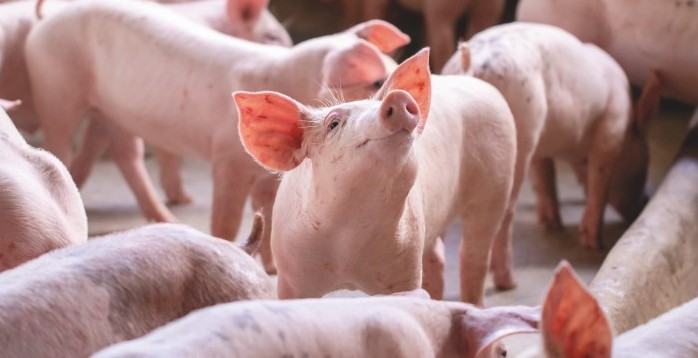The growth of global pig production is set to be slowed by a range of factors, including the resurgence of Africa swine fever (ASF) in Asia, higher feed costs and the impact of COVID-19 on demand, according to Rabobank.
Pig prices are sharply higher in most markets, as processors scramble to find adequate supplies, according the food and agriculture specialist bank.
In its latest quarterly pork update Rabobank analysts highlight how the combination of rising herd health challenges, rising costs, and demand uncertainty due to ongoing pandemic disruption have pressured margins, adding risk to global pork markets.
In China, herd losses due to new ASF outbreaks and health challenges are slowing the recovery.
While below earlier expectations, the sow herd is flat vs. 2020 and will expand through year-end as restocking efforts continue, Rabobank predicts.
Even with a projected production increase, China remains in a pork deficit and will continue to import large volumes of pork – pork imports were up 22% YOY in the first three months of this year at 1.43m tonnes. Demand is weak due to the pandemic and high relative pork prices at retail.
The Philippines has also suffered higher than expected herd losses due to ASF this year, while PRRS and PEDv are contributing to a supply shortfall in the US and Mexico, and the re-emergence of classical swine fever (CSF) in Japan and Brazil is also affecting production.
Higher disease losses in key growing regions, along with the lagged impact of industry liquidation during the pandemic, have limited available pig supplies, Christine McCracken, senior analyst – animal protein at Rabobank, said.
“African swine fever (ASF) has proven harder to manage than initially expected in some regions, slowing herd rebuilding efforts in Asia and shifting trade expectations for the rest of the world,” she added.
“We expect a gradual recovery in the herd, yet higher raising costs and demand uncertainty are expected to moderate the pace of growth,” says McCracken.
The price of feed and feed ingredients has moved 35% higher YOY, on average. As feed costs are the largest variable cost for most producers, regional differences in feed availability and supplies of reasonable feed alternatives can dramatically shift production economics. According to Rabobank, countries that rely on imported feed also have more exposure to global shortfalls, which can be exacerbated by currency volatility.
Lower production expectations have left the market short of pork, just as demand is beginning to strengthen. The imbalance is driving pork prices sharply higher in many markets, which is slowly being passed through to consumers, contributing to overall inflationary trends.
Other regional trends
EU: Hog prices have rebounded 22% since the beginning of the year, on tight hog supplies and a gradual improvement in demand. While still well below last year’s export-driven levels (-16% YOY), higher prices will help offset rising feed costs. Even with challenging conditions, production is growing in Spain, Denmark, and the Netherlands to offset slight declines in Germany and Italy. Exports remain strong, despite ASF-related trade bans on German pork.
US: Hog prices are up 68% YTD, on tighter supplies of market hogs and strong pork values. Robust demand for hams and bellies, together with lower imports and limited frozen inventory, remains supportive. Labor availability remains a challenge and is contributing to product premiums. High pork prices are weighing on exports and are likely to remain a constraint on volumes.
Brazil: Producers are struggling to offset a 99% increase in feed costs following planting delays and a disappointing first harvest. Weak domestic pork demand, due to pandemic lockdowns and the end of economic stimulus, more than offsets the benefit of record exports, weighing on hog and pork prices.




